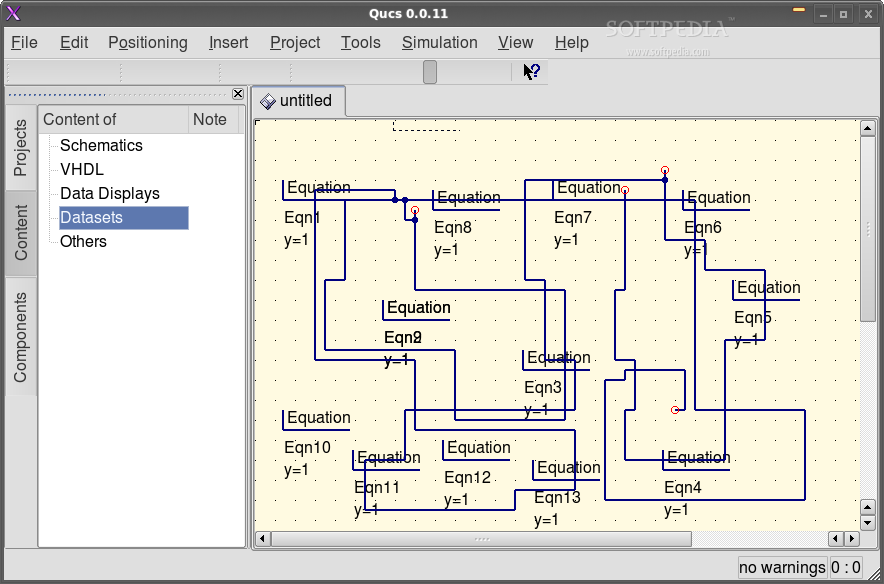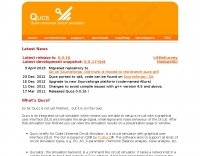

#Qucs quite universal circuit simulator software
I would much prefer to work with schematics than netlists, but given the aforementioned limitations of Qucs’ default environment, a lot of time is saved by working with netlists rather than trying to bend the MOSFET models within Qucs to a purpose for which they don’t seem to be intended. Quite Universal Circuit Simulator (QUCS) software makes electronic circuit simulation easy. The software aims to support all kinds of circuit simulation types, e.g. Therefore, for my work, I am going back to Ngspice, which is rather stable and effective for these sorts of circuits. Qucs is a circuit simulator with graphical user interface. I have some experience with SPICE and Orchad, but I have a very strong preference for Qucs. It is possible that these shortcomings might be overcome through a dedicated effort with Qucs, however the fact remains that with Qucs as it is now, simulating CMOS schematics using nanoscale transistors would require a lot of work. I am a DSP guy, so I do not use circuit simulators often. However, the provided Verilog-A model for BSIM4.0, found under “verilog-a devices” -> “bsim4v30…” in Qucs’ Components list, also does not seem to expose all of the parameters provided by the PTM webpage. Qucs supports BSIM4.0 through its support for Verilog-A devices within schematics.
#Qucs quite universal circuit simulator how to
Source code Build instructions For instructions on how to compile Qucs from the released source tarball and from the Git repository clone, please refer to the Build Instructions.

The dominant model downloadable on PTM, in SPICE represented as a level 54 MOSFET, is a BSIM4.0 model. In this section you will find all the versions of Qucs which have been released so far. This model, while faster, produces “severe inaccuracies” (quoted from here) in certain situations, and more importantly for my work does not support the wide variety of parameters provided through ASU’s PTM. Hodges, and is roughly equivalent to SPICE’s MOSFET level 1. Qucs is available for Windows, Mac and Ubuntu (open source). Qucs’ default MOSFET model is based on equations by Harold Shichman and David A. In this article we explore the features and functions of Quite Universal Circuit Simulator (Qucs) and go through a step-by-step analysis. Qucs’ input mechanism for these types of parameters (of which there are more than 100) is very slow and painful. Specifically, each parameter has to be carefully transcribed into a Qucs MOSFET element from the SPICE file generated through the PTM webpage. However, I have found the simulator to be lacking in a couple of ways for CMOS circuit simulation:ĬMOS MOSFET parameters, such as those attainable from Arizona State University’s wonderful Predictive Technology Model page, are very difficult to input into Qucs. Qucs, which I wrote about in my last post, is still my tool of choice for generating nice-looking schematics.


 0 kommentar(er)
0 kommentar(er)
